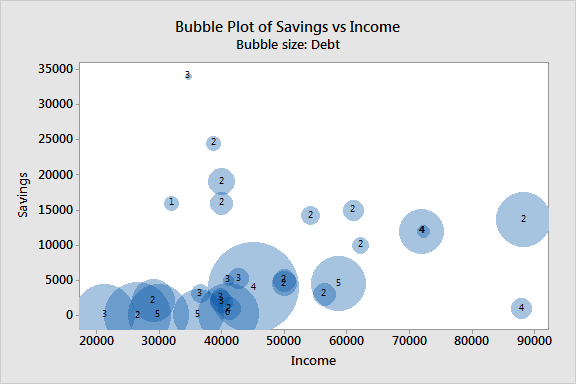main topics interpreting results session command see also
A loan agent at a bank reviews loan applications that she received the previous week. She creates a bubble plot to compare the amount of income, savings, and credit card debt that each applicant has.
1 Open the worksheet LOANAPPLICANT.MTW.
2 Choose Graph > Bubble Plot.
3 Choose Simple, and then click OK.
4 In Y variable, enter Savings.
5 In X variable, enter Income.
6 In Bubble size variable, enter Debt.
7 Click Labels.
8 On the Data Labels tab, under Label Type, choose Use labels from column, and then enter 'Credit cards'.
9 Click OK in each dialog box.
Graph window output

The bubble plot shows that the relationship between income and savings for the applicants is not simple. In general, higher incomes may be associated with slightly higher levels of savings. However, the applicants with the highest savings do not have the highest incomes.
The applicants who have the most debt (largest bubbles) tend to have little or no savings. However, many applicants who have little or no savings also do not have very much debt, as evidenced by the smaller bubbles near the bottom of the graph.
There may be a relationship between the number of credit cards (indicated by the data label for each bubble) and the amount of savings for each applicant. Applicants who have 4 or more credit cards have savings of $12,000 or less. Applicants who have savings of over $12,000 have 3 or fewer credit cards.